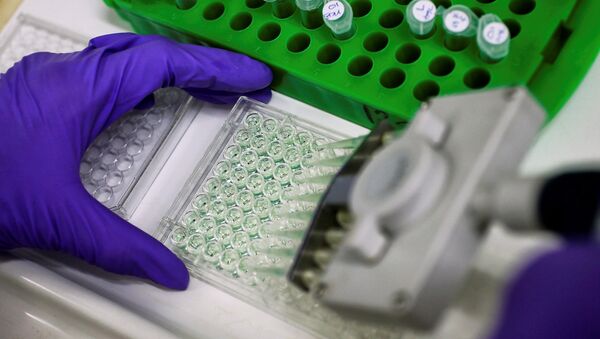"What is very important is the simplicity of our approach," Alexander Kabanov from the MSU chemistry department told Sputnik. "An organophosphorus hydrolase nanozyme can be made simply by mixing an aquatic solution of a highly-refined enzyme and a safe biocompatible polymer. Such a nanozyme is self-assembled as a result of electrostatic interaction between a protein and polymer."
The results of the research were published earlier this year in the Journal of Controlled Release.
The class of organophosphorus compounds includes extremely toxic chemical warfare agents. Those agents were produced for the first time in Germany in the 1930s, but the most dangerous nerve agents were created later, in the middle of the last century, including VX in Britain and its Soviet-made analogue, VR.
For scientists, finding an effective way to neutralize those poisonous gases and pesticides continues to remain an important task. Russian chemists are proposing to use nanoparticles, the so-called nanozymes, which were developed by Kabanov’s team in the US in the 1990s.
A nanozyme is an organic molecule filled with a substance (e.g., medicine), which it delivers to a certain part of a living organism.
Kabanov’s team adapted such nanosized agents for the delivery of a substance specially synthesized to destroy dangerous organophosphorus compounds. This hydrolase is capable of destroying the molecules of toxic gases and pesticides. But it has disadvantages. Since it is produced by bacteria, once it is delivered into a human organism it triggers an immune response. Moreover, the hydrolase is unstable and quickly removed from the body.
The problem has been solved by placing this hydrolase enzyme in nanosized particles, which trigger a much weaker immune response and increase its stability and lifetime after being delivered to an organism.


